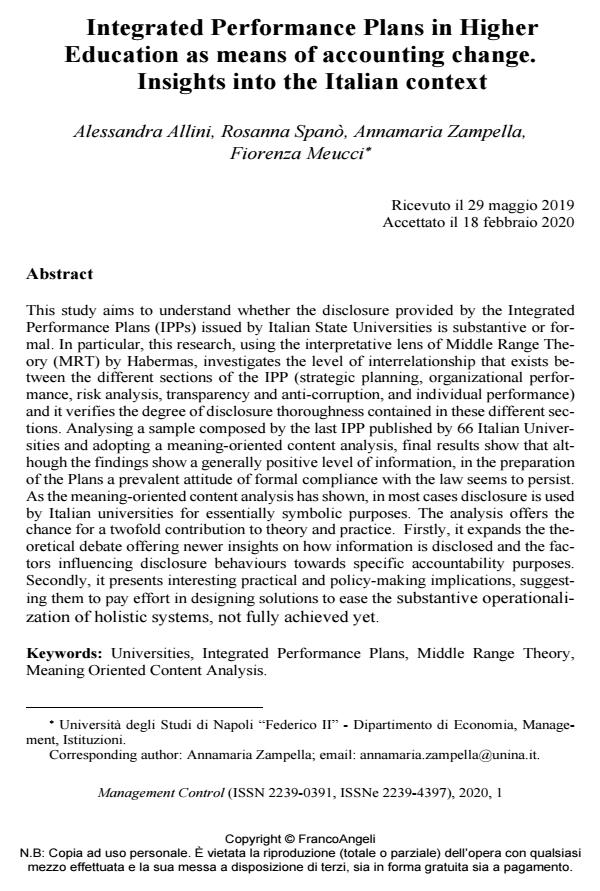Integrated Performance Plans in Higher Education as means of accounting change. Insights into the Italian context
Journal title MANAGEMENT CONTROL
Author/s Alessandra Allini, Rosanna Spanò, Annamaria Zampella, Fiorenza Meucci
Publishing Year 2020 Issue 2020/1
Language English Pages 24 P. 87-110 File size 291 KB
DOI 10.3280/MACO2020-001005
DOI is like a bar code for intellectual property: to have more infomation
click here

FrancoAngeli is member of Publishers International Linking Association, Inc (PILA), a not-for-profit association which run the CrossRef service enabling links to and from online scholarly content.
Keywords: Universities, Integrated Performance Plans, Middle Range Theory, Meaning Oriented Content Analysis
- La disclosure nei piani anticorruzione degli enti locali in Italia Francesca Manes Rossi, Luca Ferri, Annamaria Zampella, Adele Caldarelli, in MANAGEMENT CONTROL 3/2021 pp.153
DOI: 10.3280/MACO2021-003008 - The implementation of PMS in Italian universities: A longitudinal analysis Adriana Bruno, Martina Dal Molin, in MANAGEMENT CONTROL 1/2022 pp.59
DOI: 10.3280/MACO2022-001005 - Il problema dell'ambiguità nei sistemi di misurazione della performance nel settore pubblico: un'analisi della letteratura internazionale Chiara Oppi, Cristina Campanale, Lino Cinquini, in MANAGEMENT CONTROL 2/2021 pp.11
DOI: 10.3280/MACO2021-002002
Alessandra Allini, Rosanna Spanò, Annamaria Zampella, Fiorenza Meucci, Integrated Performance Plans in Higher Education as means of accounting change. Insights into the Italian context in "MANAGEMENT CONTROL" 1/2020, pp 87-110, DOI: 10.3280/MACO2020-001005